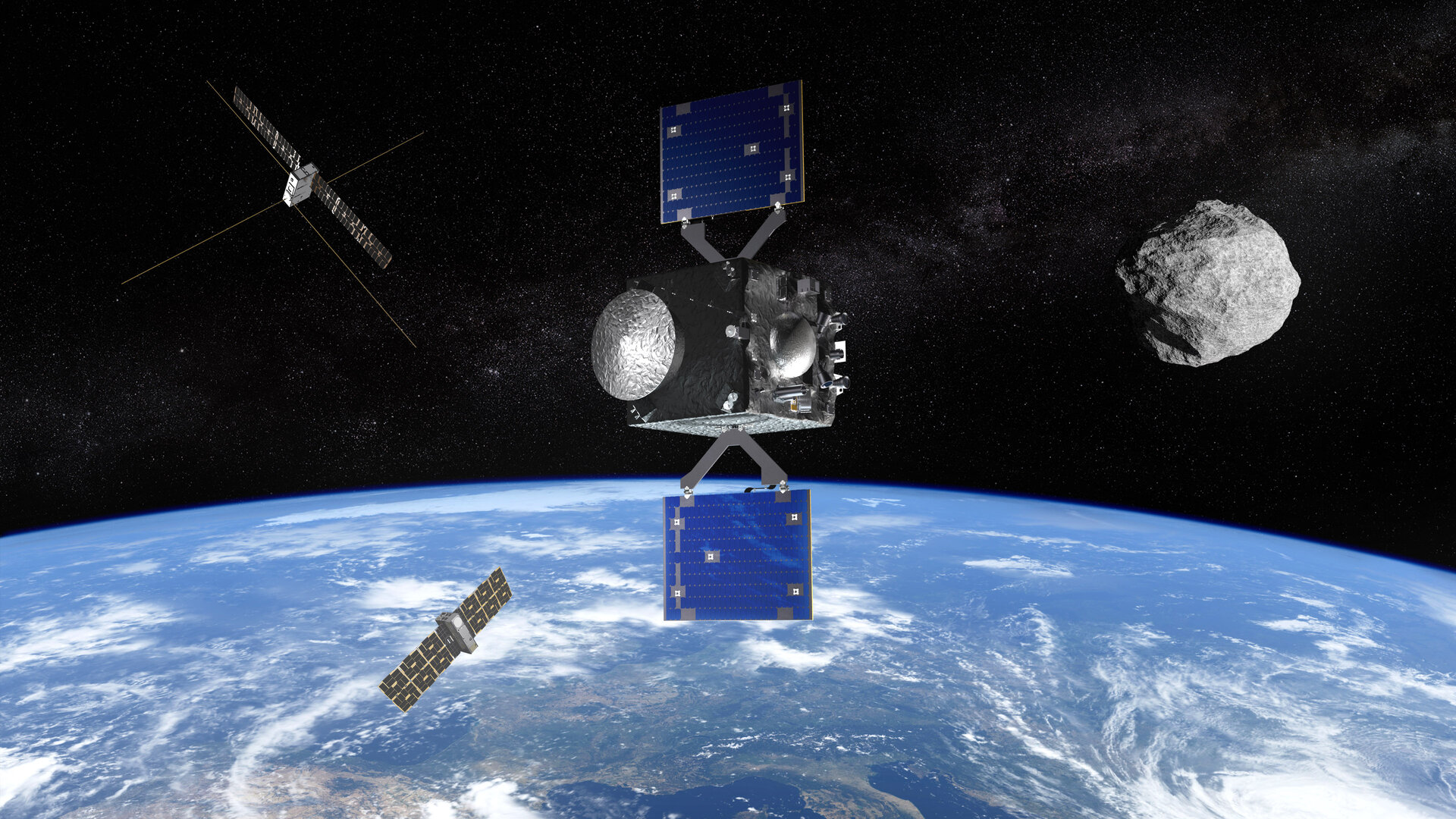16.07.2024
2188 views
22 likes
30 years ago, on July 16, 1994, astronomers watched in awe as the first of many pieces of Comet Shoemaker-Levy 9 slammed into Jupiter with incredible force. The event sparked intense interest in the field of planetary protection, as people asked, “Can we do anything to prevent this from happening on Earth?”
Today, ESA’s Space Safety Program takes another step towards answering this question. The program has been cleared to begin preparatory work for its next planetary defense mission, the Rapid Apophis Space Safety (Ramses) mission.
Ramses will rendezvous with asteroid 99942 Apophis and accompany it on its safe but extremely close flyby of Earth in 2029. Researchers will study the asteroid as Earth’s gravity changes its physical characteristics. Their findings will improve our ability to protect our planet from any such object found to be on a collision course in the future.
Apophis
About 375 m across, about the size of a cruise ship, asteroid Apophis will pass within 32,000 km of Earth’s surface on April 13, 2029. It will be briefly visible to the naked eye in a clear, dark sky for about two billion people in much of Europe and Africa and parts of Asia.
Apophis will miss Earth: Astronomers have ruled out any possibility of the asteroid colliding with our planet for at least the next 100 years. But the flyby of Apophis in April 2029 is an extremely rare natural phenomenon.
By analyzing the sizes and orbits of all known asteroids, astronomers estimate that an object this large approaches Earth only once every 5,000 to 10,000 years. By comparison, a total solar eclipse occurs somewhere on Earth once every 18 months, and Halley’s Comet returns to Earth’s sky every 76 years.
Apophis’ flyby in 2029 will attract worldwide attention and represents a unique opportunity for science, planetary protection and public engagement.
Apophis Orbit Deflected by Earth’s Gravity – NEO Toolkit
Ramses
ESA’s Ramses spacecraft will rendezvous with Apophis before it passes Earth and will accompany the asteroid during the flyby to observe how it is warped and changed by our planet’s gravity.
Patrick Michel, director of research at CNRS at the Observatoire de la Côte d’Azur in Nice, commented: “There is still so much to learn about asteroids, but until now we have had to travel deep into the solar system to study them and to perform experiments ourselves to interact with their surface.
“For the first time, nature brings us one and conducts the experiment herself. All we have to do is watch Apophis being stretched and squeezed by strong tidal forces that can trigger landslides and other disturbances and expose new material from beneath the surface.”
ESA’s Ramses mission to asteroid Apophis
Ramses is due to launch in April 2028 to allow Apophis to arrive in February 2029, two months before close approach. To meet this deadline, ESA requested permission to begin preparatory work on the mission as soon as possible, using existing resources. This authorization was granted by the Space Safety Program Board. A decision on whether to fully commit to the mission will be made at the ESA Ministerial Council meeting in November 2025.
Using a suite of science instruments, the spacecraft will perform a thorough before-and-after study of the asteroid’s shape, surface, orbit, rotation and orientation. By analyzing how Apophis changes during the flyby, scientists will learn a lot about the asteroid’s response to external forces, as well as the asteroid’s composition, internal structure, cohesion, mass, density and porosity.
These are all very important properties for evaluating how best to knock a dangerous asteroid off a collision course with Earth. Because asteroids are also time capsules formed more than four billion years ago, data from Ramses will also offer new scientific insights into the formation and evolution of the Solar System.
Apophis radar observations rule out a future impact
Meanwhile, NASA has redirected its OSIRIS-REx spacecraft to Apophis. Due to the constraints of orbital mechanics, the newly renamed OSIRIS-APEX will arrive at Apophis approximately one month after the asteroid’s flyby.
Researchers expect Earth’s tidal forces to alter the asteroid’s rotational state and possibly trigger earthquakes and landslides. Having Ramses there beforehand would provide a detailed “before and after” view of how Apophis was changed by his close encounter. Then, subsequently, having two high-capability spacecraft at Apophis after the flyby will allow for additional scientific research and measurement of long-term effects.
Rapid intelligence: a cornerstone of planetary defense
The international collaboration between NASA’s DART asteroid impactor and ESA’s Hera asteroid probe has demonstrated that, in principle, humanity can redirect an asteroid if necessary. But to respond to real danger, we need to be able to build and deploy a rapid response.
Richard Moisel, head of ESA’s Planetary Defense Office, explains: “Ramses will demonstrate that humanity can deploy a reconnaissance mission to rendezvous with an approaching asteroid in just a few years. This type of mission is a cornerstone in humanity’s response to a dangerous asteroid. First, a reconnaissance mission will be launched to analyze the orbit and structure of the approaching asteroid. The results will be used to determine how best to redirect the asteroid or rule out no-hits before an expensive deflector mission is developed.
Paolo Martino, leading the ESA Ramses effort, added: “The Ramses mission concept leverages much of the technology, expertise and industrial and scientific communities developed for the Hera mission. Hera has demonstrated how ESA and European industry can meet tight deadlines, and Ramses will follow suit.”
Hera approaches the asteroids of Didymus



